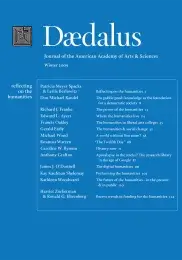The humanities in liberal arts colleges: another instance of collegiate exceptionalism?
Because liberal arts colleges are “in certain respects more diverse than any other type of higher education institution,”1 and because their nature, history, generally shared characteristics, even their very number, are so often a matter of contention, I have learned over the years the wisdom, when attempting to say something about them, of beginning with a preliminary exercise in intellectual throat-clearing. Hence I offer these rather basic introductory stipulations.
The first concerns the nature of such colleges and the history of the category of institutions to which they belong. Some of our liberal arts colleges began their careers as secondary schools of one sort or another (Williams College is one such example), and it is not only for Europeans that the term “college” has tended willy-nilly to evoke the image of an institution of secondary education. “The college will disappear, in fact, if not in name,” David Starr Jordan, founding president of Stanford University, confidently predicted a century ago. “The best,” he added, “will become universities, the others will return to their place as academies”–return, that is, to being advanced-level secondary schools.2
But even when they did in fact originate as schools, once they became colleges such institutions did not trace their lineage back to any sort of academy for secondary education. Their institutional forebears, instead, were the constituent colleges of Oxford and Cambridge and, more precisely, beyond them the single-college universities that had appeared in the fifteenth and sixteenth centuries in Spain, Scotland, and Ireland. Those institutions, unlike the Oxbridge (or, for that matter, the medieval Parisian) colleges, though still colleges were also something different in that they were granted the crucial and distinctive prerogative attached to university status: namely, that of granting degrees. Sigüenza in Spain, accorded that prerogative in 1489, was a classic example. So, too, later on, was Trinity College, Dublin –or Dublin University, as it was sometimes called, or, better, and with greater legal and institutional precision, the University of Trinity College, Dublin.1 . . .
